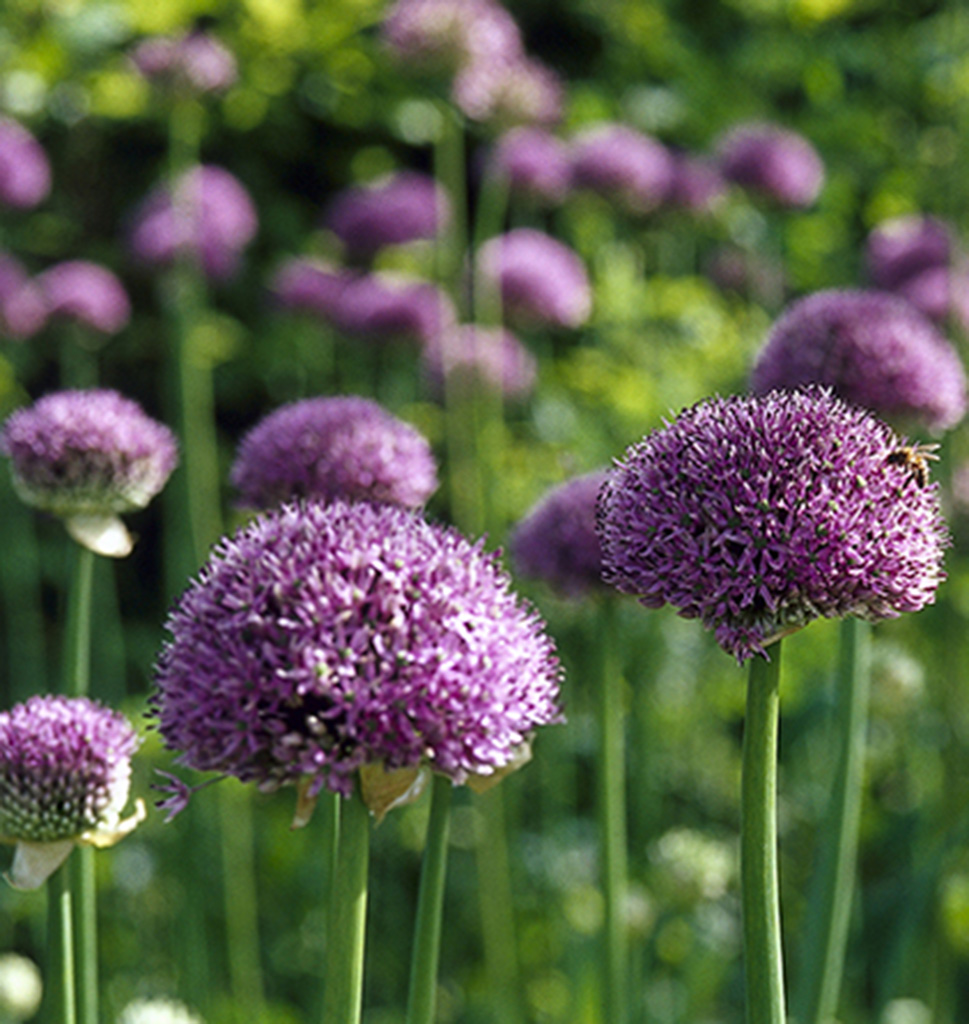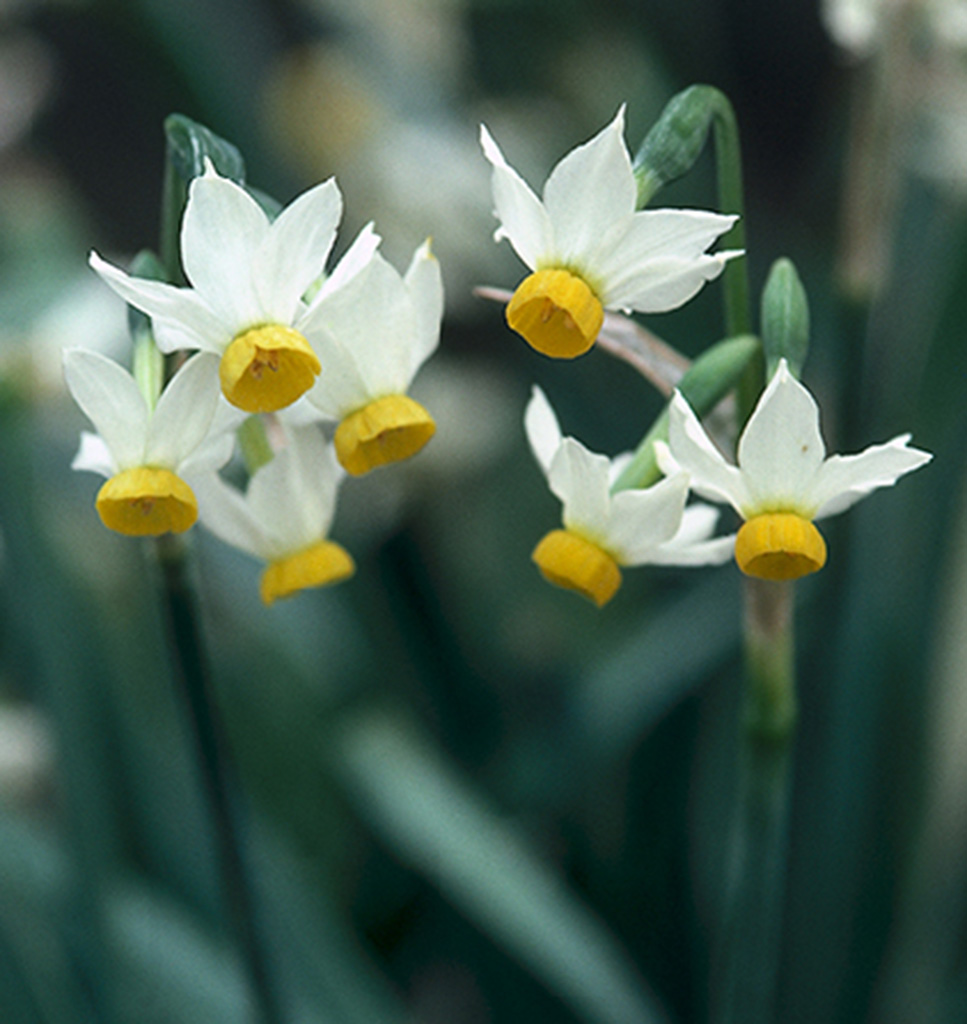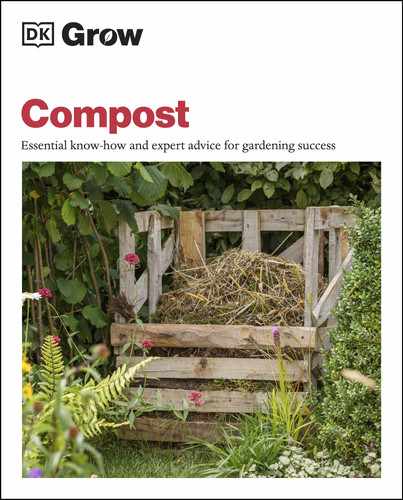PLANTING SPRING BULBS
Spring bulbs light up the garden as soon as temperatures start to rise, providing a dazzling display of flower colors, textures, shapes, and sizes to welcome in the new season. Plant them in autumn to bloom the following year and many will then return year after year with little aftercare, apart from a mulch of homemade compost. You can add bulbs to containers, too, using your own materials to pot them up.

Plant your spring bulbs in autumn in soil improved with homemade compost.
CHOOSING SPRING BULBS
There are bulbs for every garden and they come in all colors of the rainbow, from sunny yellow daffodils to smouldering dark red tulips and bright blue grape hyacinths (Muscari). You may also want to try a few lesser-known bulbs such as the elegant white spring and summer snowflakes (Leucojum) and dainty Sicilian honey garlic (Nectaroscordum siculum), which are just as easy as daffodils to grow and will reappear every spring after planting. Make a list of your favorites and include flowers for each month to create a continuous display, with late tulips and alliums delivering a spectacular finale as the seasons turn.

Allium cernuum produces pink pendent flowers.

Allium ‘Gladiator’ adds impact when grown in groups.

Narcissus ‘Canaliculatus’ is ideal for growing in containers.

Tulipa ‘Artist’ is a striking orange and green variety.

Tulipa ‘Dreamland’ bears white-edged pink flowers.

Tulipa ‘Purissima’ adds an elegant note to a border.

Nectaroscordum siculum produces unusual flowers.

Muscari are available in many different shades of blue.
PLANTING IN BEDS
Most bulbs enjoy free-draining soil, so if you have heavy clay, improve it with a mulch of homemade compost in autumn and reapply it every year at the same time. If you are just starting out and your soil does not drain well, choose daffodils (Narcissus) and camassias, which will cope better than most with wetter conditions. Spring bulbs such as tulips and daffodils will also benefit from a compost mulch laid over free-draining soils in early spring. Mulching lighter soils will prevent vital plant nutrients from being washed away, which will encourage the bulbs to flower year after year.
Plant spring bulbs in autumn in full sun or part shade and remember that areas beneath trees that receive little sun in summer will probably have enough light to promote flowering in spring, before the canopies unfurl. Most bulbs should be planted beneath the soil at 2–3 times their own depth; for example, a daffodil bulb measuring 2in (5cm) would be planted 4–6in (10–15cm) deep. If you have clay soil, plant tulips a little deeper, about 8in (20cm) below the surface, and on a layer of sand, which encourages the bulbs to bloom for more than one year; ask a reputable supplier for varieties most likely to repeat flower. Plant all bulbs with the pointed end up.

Elegant camassias are the perfect choice for heavier clay soils.
POTTING UP BULBS
Tulips, daffodils, and grape hyacinths are good choices for container displays, while crocuses, dwarf irises, and species tulips will create a splash of color in alpine troughs. Plant your bulbs in autumn, in an equal mix of homemade compost, garden soil, and leaf mold—add some fine gravel when planting tulips or an alpine trough. You can also layer the bulbs in a large pot, planting tulips on about 4in (10cm) of potting mix at the bottom, followed by a 2in (5cm) layer of potting mix and some daffodils on top of this. Add more potting mix and, finally, plant grape hyacinths at the top, so that they are about 2in (5cm) below the surface. Either choose varieties that all flower at the same time, or opt for a progression of blooms if you prefer. Make sure your containers have drainage holes and set them on pot feet to prevent the soil mix from becoming waterlogged. Place the pots in a sheltered spot for the winter and bring them into a sunny or partly shaded area when the shoots appear in spring.

Plant tulip bulbs in a pot quite close together but not touching.

Layer tulip, daffodil, and grape hyacinth bulbs in one large pot for a mixed display.
ANNUAL CARE
After your bulbs have bloomed, nip out the dying flowers with your fingers or cut them off with pruners. This will prevent the plants from putting their energies into making seed rather than increasing the bulb size, from which a new flower will appear the following year. Let the foliage die down naturally, as this also helps the plant to store nutrients and energy in the bulb, ready for its next outing. You can use the space left after the bulbs have finished to plant summer bedding.

Remove the flower heads of daffodils and other bulbs as they begin to fade to prevent them from making seeds.
